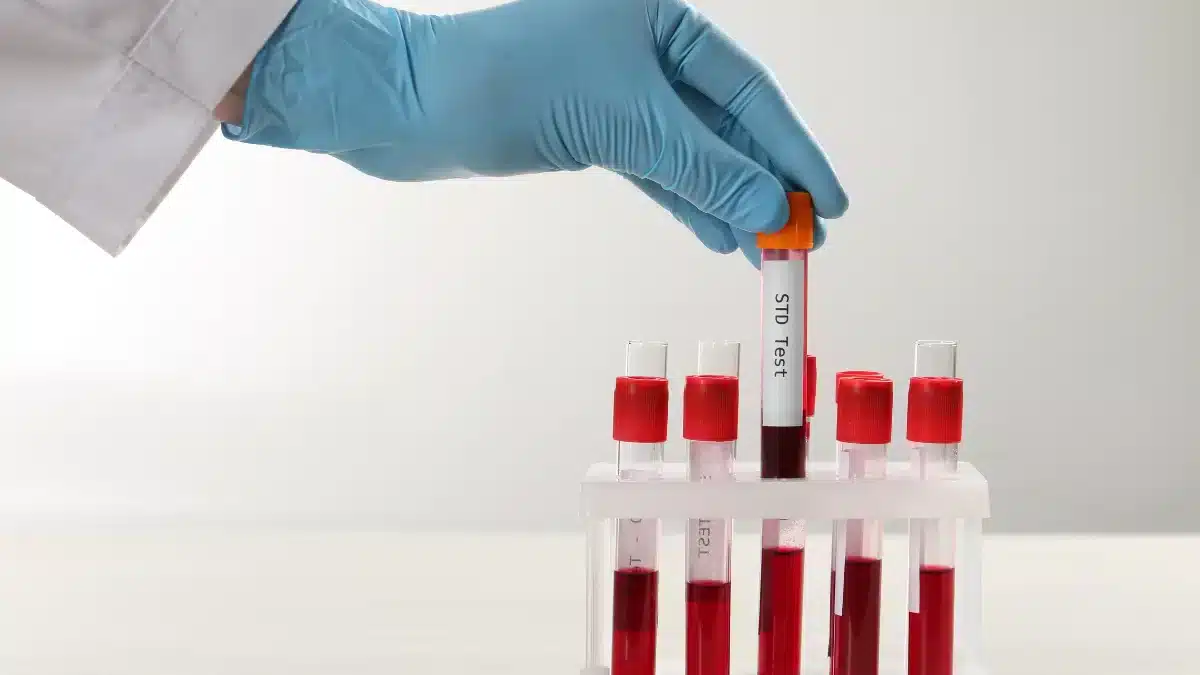Is Atopobium an STD? Uncovering the Truth
Amidst the realm of Sexually Transmitted Infections (STIs), the presence of less familiar bacteria sparks both confusion and worry.
Atopobium, a little-known microorganism, has piqued interest in the realm of sexual health.
Therefore, this article explores the question: Is Atopobium an STD?
Let’s uncover the secrets of this bacterium, examining how it fits into the complex world of sexual health.
Understanding Atopobium
Atopobium is a type of bacteria that naturally resides in various parts of the human body, particularly in the genital and gastrointestinal tracts.
Not all bacteria are harmful; many play crucial roles in maintaining a balanced and healthy environment within our bodies, and
Atopobium is no exception.
Atopobium is commonly found in both men and women in the genital tract.
In women, it forms a part of the vaginal microbiota, which comprises a community of microorganisms naturally inhabiting the vagina.
Simultaneously, in men, Atopobium can be present in the urethra and genital area.
Apart from the genital tract, Atopobium is also found in the gastrointestinal tract.
It contributes to the complex ecosystem of microorganisms that aid in digestion and other essential bodily functions.
It’s crucial to tell the difference between Atopobium being a usual part of the body’s microorganisms and when it causes an infection.
In most cases, Atopobium is harmless and does not show any symptoms.
Nonetheless, an overgrowth or imbalance of specific bacteria, Atopobium included, can give rise to infections.
Is Atopobium considered an STD

Atopobium, while not classified as a Sexually Transmitted Disease, resides naturally in the genital tract as part of the normal microbial community.
Some Atopobium species, however, are linked to Bacterial Vaginosis (BV) in women.
It is a condition causing an imbalance in the vaginal microbiota, leading to symptoms such as unusual discharge and odor.
Despite its general harmlessness, understanding the association with BV is crucial for sexual health.
This condition can impact overall well-being, increasing the risk of infections and complications.
Therefore, maintaining good genital hygiene and practicing safe sex are crucial elements of a proactive approach to sexual health.
Additionally, seeking medical advice for unusual symptoms is essential for overall well-being.
Prevention and treatment
Prevention and treatment are integral aspects of maintaining sexual health.
Some of them include:
- Hygiene practices: Regular and proper hygiene, including gentle washing of the genital area, can contribute to maintaining a healthy balance of bacteria, reducing the risk of infections
- Medical consultation: If experiencing unusual symptoms such as changes in vaginal discharge or persistent discomfort, it is advisable to seek medical consultation. Timely intervention can help diagnose and treat any potential infections
- Safe sex: Employing safe sex practices, which encompass the use of barrier methods like condoms, is effective in preventing the transmission of Sexually Transmitted Infections. It’s vital to emphasize that even though safe sex is important, Atopobium is not primarily classified as an STD
Conclusion
Atopobium is a naturally occurring bacterium in the genital and gastrointestinal tracts, playing a role in maintaining a healthy microbial balance.
While not classified as a Sexually Transmitted Disease (STD), specific Atopobium species are associated with Bacterial Vaginosis (BV) in women.
BV can cause an unusual vaginal discharge, odor, and discomfort, in general, affecting overall well-being.
This emphasizes the importance of good genital hygiene, safe sex practices, and prompt medical consultation for any unusual symptoms.
Understanding Atopobium’s role in infections highlights the significance of proactive measures for optimal sexual health.
Consulting a healthcare professional is the best course for accurate diagnosis and appropriate management if any concerns arise.
Frequently Asked Questions
Is Atopobium harmful to the genital tract?
No, Atopobium is generally harmless in the genital tract. It’s a natural part of the microbial community and usually causes no symptoms. However, an overgrowth can potentially lead to infections, so maintaining balance is essential for good sexual health.
Can Atopobium cause Bacterial Vaginosis (BV) in women?
Yes, specific Atopobium species have been linked to Bacterial Vaginosis (BV) in women. BV is characterized by an imbalance in the vaginal microbiota, leading to symptoms like unusual discharge and odor. Understanding this association is crucial for women’s reproductive health.
Is Atopobium classified as a Sexually Transmitted Disease (STD)?
No, Atopobium itself is not classified as an STD. It naturally resides in the genital tract as part of the normal microbial community. However, certain species may be associated with infections, emphasizing the importance of proactive sexual health measures.
What should I do if I suspect an infection related to Atopobium?
If you experience symptoms such as changes in vaginal discharge or persistent discomfort, consult a healthcare professional promptly. Timely medical intervention can help diagnose and treat potential infections, ensuring optimal reproductive and sexual health.
WowRx uses only high-quality sources while writing our articles. Please read our content information policy to know more about how we keep our content reliable and trustworthy.






